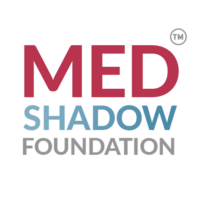Welcome to the FDA Side Effects Update. This series is designed to keep you informed about the latest safety advisories and newly documented side effects of your medications. In this installment, we’re highlighting safety updates concerning Gralise (gabapentin), Horizant (gabapentin enacarbil), Lyrica and Lyrica CR (pregabalin), and Neurontin (gabapentin).
How to Read This Report
This report is prepared using the most recent information posted in the SrLC database. It highlights recent safety labeling changes. It includes only newly reported side effects and safety information; additional side effects and warnings will appear on the drug label. Not all recent changes to the SrLC database or the label may be listed here. For all changes and the complete list of warnings and side effects, please click on the drug label link.
Each of the items (approval and update dates, drug names, etc.) contained in this report are obtained from the SrLC. The side effects and medication descriptions are simplified and made clearer, if needed. Sometimes, additional sources, like a medical dictionary, may be used to translate technical medical phrases. Other sources (company news, FDA press releases, etc.) may be used to learn about some label changes.
Side Effect Update for Gabapentinoids
Gabapentin and pregabalin (“gabapentinoids”) have new warnings about suicidal ideation (thoughts about suicide or taking one’s own life) that can happen during or after stopping treatment. These drugs also have other withdrawal warnings and the potential for neonatal withdrawal in infants exposed during pregnancy.
The gabapentinoid family of drugs include gabapentin (brand name Neurontin), pregabalin (brand name Lyrica), gabapentin enacarbil (brand name Horizant), and a special formulation of gabapentin (Gralise). These drugs are chemically related to a gamma-aminobutyric acid (GABA) neurotransmitter and are used to treat conditions involving nerve pain and seizures. They work by calming overactive nerve signals.
The following safety label updates were made in response to a 2025 FDA notification letter (such as the one issued for Neurontin), which informed gabapentinoid drug sponsors of newly required safety information to include on their labels.
Gralise (active ingredient: gabapentin) tablets
Initial FDA Approval: 1993
Side Effect Update Date: April 25, 2025
Medication Description: Treats nerve pain from shingles (post-herpetic nerve pain).
Updated Side Effects/Safety Information: A new warning that suicidal behavior and ideation have been reported in patients while taking or after stopping the drug. Patients should be monitored for the emergence or worsening of depression, suicidal thoughts or behavior, and/or any unusual changes in mood or behavior.
A new subsection under “Increased Risk of Adverse Reactions with Abrupt or Rapid Discontinuation” warns about withdrawal symptoms after both short-term and long-term treatment. These include, but are not limited to: seizures, depression, suicidal ideation and behavior, agitation, confusion, psychotic symptoms, anxiety, insomnia, nausea, pain, sweating, tremor, headache, dizziness, and malaise. Patients stopping the drug are advised to taper the medication gradually over a minimum of one week.
An additional warning about neonatal withdrawal syndrome has been reported in newborns exposed to gabapentin in utero for an extended period of time when also exposed to opioids close to delivery. Patients taking the drug should notify their healthcare provider if they are pregnant or intend to become pregnant, or if they are breastfeeding or intend to breastfeed.
Other withdrawal symptoms are listed; read revised drug label for complete details.
Essential Extras: Warns that Gralise is not substitutable with other gabapentin products.
FDA Safety Announcement: FDA Gralise Safety Label Change and Revised Drug Label
The revised drug label contains a complete list of FDA-approved indications, side effects, warnings, and more.
Horizant (active ingredient: gabapentin enacarbil) tablets
Initial FDA Approval: 2011
Side Effect Update Date: April 25, 2025
Medication Description: Treats restless legs syndrome (RLS) and nerve pain from shingles (post-herpetic nerve pain).
Updated Side Effects/Safety Information: A new warning that that suicidal behavior and ideation have been reported in patients while taking or after stopping the drug. Patients should be monitored for the emergence or worsening of depression, suicidal thoughts or behavior, and/or any unusual changes in mood or behavior.
The warning continues that abrupt or rapid discontinuation of gabapentinoids may increase the risk for seizures.
An additional warning about neonatal withdrawal syndrome has been reported in newborns exposed to gabapentin in utero for an extended period of time when also exposed to opioids close to delivery. Patients taking the drug should notify their healthcare provider if they are pregnant or intend to become pregnant, or if they are breastfeeding or intend to breastfeed.
Other withdrawal symptoms are listed; read revised drug label for complete details.
FDA Safety Announcement: Horizant FDA Safety Label Change and Revised Drug Label
The revised drug label contains a complete list of FDA-approved indications, side effects, warnings, and more.
Lyrica (active ingredient: pregabalin) capsules and oral solution
Initial FDA Approval: 2004
Side Effect Update Date: April 25, 2025
Medication Description: Treats nerve pain associated with spinal cord injury, diabetic peripheral neuropathy, and shingles. Also treats fibromyalgia and is an add-on (adjunctive) treatment for partial-onset epilepsy seizures (also called focal seizures).
Updated Side Effects/Safety Information: A new warning that suicidal behavior and ideation have been reported in patients while taking or after stopping the drug.
The postmarketing experience section adds that reported adverse withdrawal symptoms after discontinuation of pregabalin include, but are not limited to, seizures, depression, suicidal ideation and behavior, agitation, confusion, disorientation, psychotic symptoms, anxiety, insomnia, nausea, pain, sweating, tremor, headache, dizziness, malaise, and diarrhea.
An additional warning about neonatal withdrawal syndrome has been reported in newborns exposed to gabapentin in utero for an extended period of time when also exposed to opioids close to delivery. Patients taking the drug should notify their healthcare provider if they are pregnant or intend to become pregnant, or if they are breastfeeding or intend to breastfeed.
Other withdrawal symptoms are listed; read revised drug label for complete details.
FDA Safety Announcement: FDA Lyrica Safety Label Change and Revised Drug Label. The revised drug label contains a complete list of FDA-approved indications, side effects, warnings, and more.
LYRICA CR (active ingredient: pregabalin) extended-release tablets
Initial FDA Approval: 2004
Side Effect Update Date: April 25, 2025
Medication Description: Treats nerve pain associated with shingles (post-herpetic nerve pain) and diabetic peripheral neuropathy.
Updated Side Effects/Safety Information: A new warning that suicidal behavior and ideation have been reported in patients while taking or after stopping the drug. Following abrupt or rapid discontinuation of LYRICA CR, some patients reported symptoms including insomnia, nausea, headache, anxiety, and diarrhea.
A new subsection under “Increased Risk of Adverse Reactions with Abrupt or Rapid Discontinuation” warns of symptoms including insomnia, nausea, headache, anxiety, and diarrhea. Increased seizure frequency may occur in patients with seizure disorders taking Lyrica CR for pain. Patients stopping the drug are advised to taper the medication gradually over a minimum of one week.
The postmarketing experience section adds that reported adverse withdrawal symptoms after discontinuation of pregabalin include, but are not limited to, seizures, depression, suicidal ideation and behavior, agitation, confusion, disorientation, psychotic symptoms, anxiety, insomnia, nausea, pain, sweating, tremor, headache, dizziness, malaise, and diarrhea.
An additional warning about neonatal withdrawal syndrome has been reported in newborns exposed to gabapentin in utero for an extended period of time when also exposed to opioids close to delivery. Patients taking the drug should notify their healthcare provider if they are pregnant or intend to become pregnant, or if they are breastfeeding or intend to breastfeed.
Other withdrawal symptoms are listed; read revised drug label for complete details.
FDA Safety Announcement: FDA Lyrica CR Safety Label Change and Revised Drug Label
The revised drug label contains a complete list of FDA-approved indications, side effects, warnings, and more.
Neurontin (active ingredient: gabapentin) capsules, tablets, oral solution
Initial FDA Approval: 1993
Side Effect Update Date: April 25, 2025
Medication Description: Treats partial-onset epilepsy seizures (also called focal seizures) and nerve pain associated with shingles (post-herpetic nerve pain). Gabapentin is used off-label for many other conditions, including fibromyalgia, bipolar disorder, anxiety disorders, alcohol misuse disorder, other types of pain, and more.
Updated Side Effects/Safety Information: A new warning that suicidal behavior and ideation have been reported in patients while taking or after stopping the drug. Patients should be monitored for the emergence or worsening of depression, suicidal thoughts or behavior, and/or any unusual changes in mood or behavior. Patients stopping the drug are advised to taper the medication gradually over a minimum of one week.
The postmarketing experience section adds that reported adverse withdrawal symptoms after discontinuation of gabapentin include, but are not limited to, seizures, depression, suicidal ideation and behavior, agitation, confusion, disorientation, psychotic symptoms, anxiety, insomnia, nausea, pain, sweating, tremor, headache, dizziness, malaise, and diarrhea.
An additional warning about neonatal withdrawal syndrome has been reported in newborns exposed to gabapentin in utero for an extended period of time when also exposed to opioids close to delivery. Patients taking the drug should notify their healthcare provider if they are pregnant or intend to become pregnant, or if they are breastfeeding or intend to breastfeed.
This section was removed from the drug label: Section 5.10: “Sudden and Unexplained Death in Patients with Epilepsy.”
FDA Safety Announcement: Neurontin FDA Safety Label Change and Revised Drug Label. The revised drug label contains a complete list of FDA-approved indications, side effects, warnings, and more.






